The 2019 GORUCK Star Course 50-miler in DC was an amazing event. It was my first Star Course experience and, as I note in my GORUCK Star Course AAR, it did not disappoint.
Early in the event my team and I were cranking at a 14-minute-mile pace (+/-) and for a moment I thought, “We might actually be a top finisher.”
Those dreams faded big time as the event progressed. We ultimately finished in 19 hours.
That said, we did get a huge surprise around 7 AM, just 10 hours into the event, when it was announced that the winning team had crossed the finish line… in TEN HOURS!
When something that epic happens, we’ve got to hear the rest of the story. So, I reached out to Brandon and Ken from teambalanceect and asked them some questions. They were kind enough to reply.
First, can we get an introduction?
We competed in the DC Star Course as a two-person team: Ken Letterle and Brandon Petelin. Ken currently lives in Houston, Texas, and Brandon currently lives in Washington DC.
Although we are both seasoned ultra-runners and adventure racers, our training regimens are quite different. Ken runs a lot and incorporates some more general strength and cross-training, while Brandon is a CrossFit Endurance guy, doing far fewer miles of “actual” running in a given week. In fact, Brandon only really runs on average about 10-15 miles a week, most of it being in the form of intervals.
Let’s just get to the point. How did you guys manage a 10-hour Star Course?
We must admit, 10 hours with a 30# pack was a bit faster than we originally anticipated. We expected to come in at sub-11, but 10 hours was a bit of a stretch. Honestly, what helped us was the fact that we are used to running with similar weighted packs in the multi-day stage races we compete in. Between the two of us, we’ve done five such races (one as a team), where we had to carry all our gear (including food) for 160+ miles over 7 days. We’ve done these races in some extreme environments (Patagonia, Grand Canyon, Gobi Desert). So, doing 50 miles around DC seemed reasonable.
We also benefited from having now run close to 1000 miles together in races (many as a team, but also a lot as individuals) over the last 4 years. We had a pretty good idea how long it would take us to cover 50 miles.
Can you talk about your gear? You obviously weren’t sporting GORUCK packs. What were you using and how did it work with supporting the weight?
We were using 20L Raidlight Olmo packs. Brandon was also using the add-on 2L front pack. This is the older version of the current Raidlight multi-day stage race packs, but honestly, based on our experience, the entire lineup of Raidlight packs is great. As we mentioned, we are used to loading these packs up with approximately 30# to start a stage race, so they handled the weight just fine, as expected.
Outside the packs filled with ruck plates, we really didn’t have too much gear to carry for this one. It was a warm night, so other than headlamps, the only thing we brought was food and water.
How did you guys approach food and hydration?
With respect to food, we also benefited from our stage racing experience. We’re used to carrying 7 days’ worth of calories; thus, 10-20 hours was not a big deal. With that said, it truly is an art to learn what works and what doesn’t on an individual basis during these types of events. It’s always a learning experience.
For this event, we started with the equivalent of about 200 calories an hour to sustain for ~15 hours. We both had a combination of mixed nuts, cookies, salami and cheese rolls, chocolate covered espresso beans, and Skratch powder, among some other goodies.
Additionally, to the point of individualized nutrition, Ken loves to carry Salted Nut Rolls, Gu gels, and SlimJims. Brandon uses Maurten gels and powder, Endurox R4, and Starburst mini chews.
The real secret weapon is that we both carried a beer (a strong IPA) that we enjoyed at about mile 30. It was a lifesaver in this event because we were running very low on water for the first ~35 miles.
It turns out that we drastically underestimated our water needs during this event. We started with 1.5L each, which usually should be enough for 15 miles, but it was hotter than we expected. We also were moving faster than the water aid stations on the 16.5-mile C&O canal out-and-back could set up. We saw no one during that stretch.
Luckily, we found a working water fountain at one of the park restrooms, otherwise, we could have been in real trouble. We filled up at ~18.5 miles. The big problem was that then we headed back into DC and everything was closed at 3AM. We finally passed an open CVS where we grabbed some water and coconut water, but in the meantime, when the water ran dry, the beer tasted great!
As a final point, we probably also ate way too little during this event because when we ran out of water, it became much harder to get food down during our dry spell.
For others doing this event, find the individualized foods that your stomach can handle on the move (real food if possible). And from experience, we highly recommend aiming to take in ~200 calories per hour and drink to thirst, trying to sip every 10 minutes or so.
I saw one of you wearing a map, did you use any other navigation tools? How did you optimize your route?
We marked our points on the physical map so we could more easily follow it on the move. Once we put all the points on the map, we basically traced what would be (at least in our view) an optimal route: who knows if it was the “best” possible route. We still don’t know, but the mileage showing on our watches at the end was 49.6 miles; so, it seems to have worked out well. We did reference a phone on occasion to find an optimal route between any 2 given points, but this was limited to Google maps.
Admittedly, part of the reason we went the physical map route was as practice for another team event we are repeating this September, the Endeavor Team Challenge. Although the night orienteering component in that event is far more extreme, this event at least gave us the opportunity to practice reading a map with a headlamp, while tired.
How’d you feel in the event? I know most of us felt pretty beat up and broken when we finished. Any dark times for you on the course?
We felt pretty good throughout the event – with the notable exception of being a bit dried out coming off the C&O canal section.
Unique to this event was some discomfort in our feet and ankles from carrying the heavy pack along harder surfaces, but that seemed to fade away around mile 30…might have been the IPA or the climb up to the Cathedral that helped push the discomfort aside.
There weren’t any real “dark times” along the way – and the team aspect of this event probably helped with that. In longer solo events, you can easily get drawn into your own head and lose sight of the moment, whereas with a teammate you are constantly pulled into the present. Our route selection also kept the motivation levels high since we tackled the long out and back early on and had the monuments across the city to enjoy through the night.
What advice do you have for the “regular” Rucker looking to do the Star course?
The most important things are training, nutrition, equipment, and mental strength during the event. You can train in several different ways and still be successful, especially if your goal is just finishing.
CrossFit Endurance works for Brandon, and longer runs (accompanied with cross-training) works for Ken. In either case, doing substantially longer and intense training sessions helps immensely.
Nutrition is extremely personal and needs to be practiced on several occasions in different environments and under different levels of stress.
Equipment is also a preference, but we think it makes sense to find things that are comfortable. We think running or trail shoes are a must. The pack should ride comfortably on your frame and not cause too much shoulder soreness that it becomes unbearable.
This is also where equipment meets training. Not only do you need to do some shoulder and back work to bear the load of the pack, but you should also practice with the pack and shoes you are going to use to avoid any nasty surprises. The good news is that because you can technically use a phone mapping app, the navigation isn’t really an issue for this event.
There are other minor gear choices that we would be happy to discuss if anyone had any individual questions, including things like foot taping for blisters or chaffing. We’ve tried most things out there in pretty extreme conditions and could probably guide you in the right direction. Luckily rain and cold were not an issue this year, but we have had plenty of experience with those elements (and snow) in some of our mountain races: we’re happy to share anything we can.
Finally, the mental strength aspect is hard to prepare for. You just need to be prepared for anything and go into it knowing it will really suck at some point. It’s like a roller coaster. You’ll feel like shit at some point, then you’ll feel food again, then you’ll feel like shit. The best thing to remember in your down times is that it can only get better (and it always does). Push through pain and you’ll make it to the end, we promise!
What advice do you have for the person wanting to try and beat your time?
Look, we think we could beat our own time. Based on where we finished, we think sub-10 hours absolutely can be done. A team should train hard and do it next year. You need to move fast (running a lot, and hiking fast when you don’t), but it can be done.
Practically speaking, part of the difficulty in achieving fast times in extreme team events is that you are always only moving as fast as your lowest common denominator. During these events, everyone is going to struggle at different times, which makes it tough. The more people you have, the harder it is. We do many of our team events with a third individual (Garth Reader – a 56-year-old gentleman from Los Alamos that actually pushes our 37-year-old butts into the “real” pain cave) that unfortunately wasn’t able to join us this time around. And without a doubt, I think running this event with only the two us felt easier, although with Garth, we probably would have run smarter early on, and ultimately faster.
Thus, the biggest key is to find teammates that are exactly on the same page, move at a similar pace, can help each other through their own individual dark times, and know when it’s okay to talk or when to just shut up and not bother the hurting teammate. This takes a lot of practice. As we said, we have raced almost 1000 miles together, and we somehow still get along and find stuff to talk about. Ultimately, training and racing together become invaluable when you’re trying to go fast, but not so fast that one person blows up. It’s all about knowing each other’s limits and communicating.
Anything else you want to share or talk about?
If anyone out there has any questions about anything (gear, training, performance during an event, nutrition, choosing/finding events, etc), we are happy to link up. We both love to talk about extreme events, share ideas, and help others in any way we can. You can reach me, Brandon, on IG @bpetelin17 and me, Ken, at @k_letterle. You can also connect with Brandon through his DC endurance training group on Facebook.
So… what do you think? Ready to tackle your own GORUCK Star Course? Click here to find a course and start training!

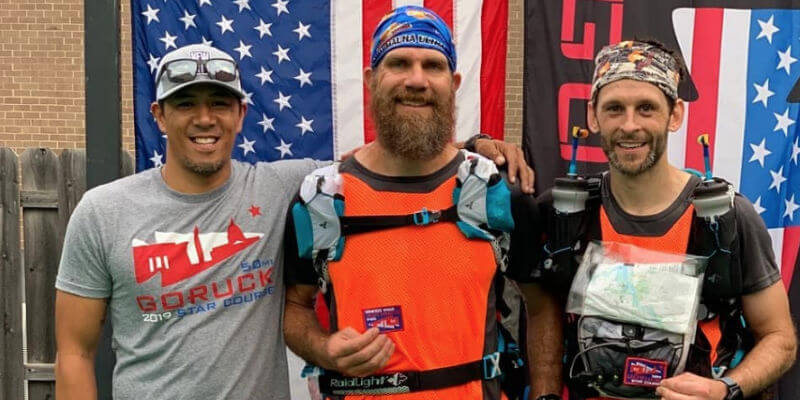
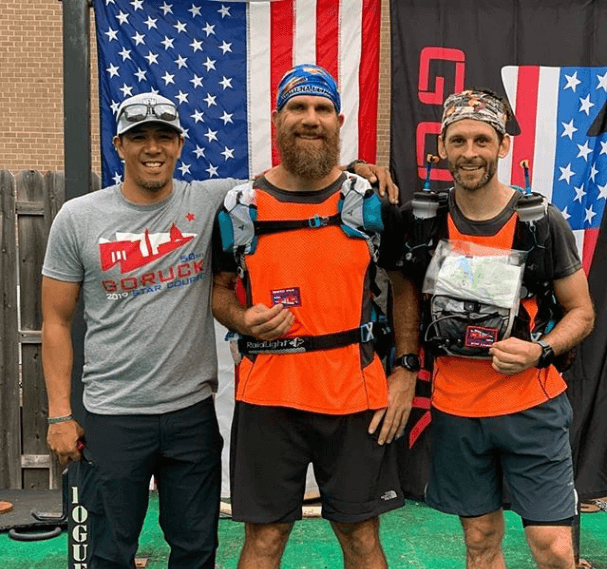
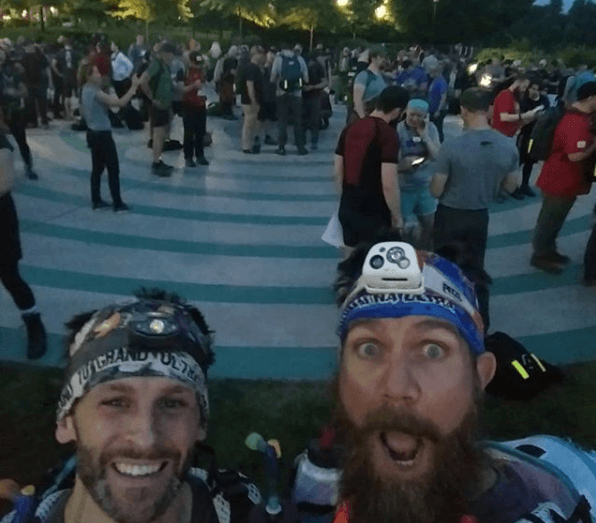
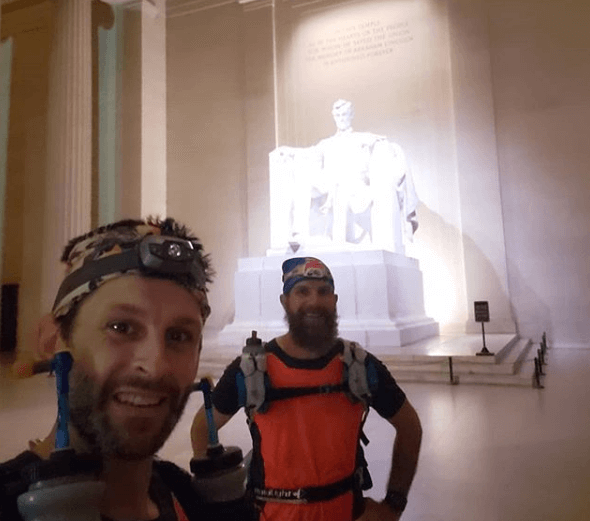
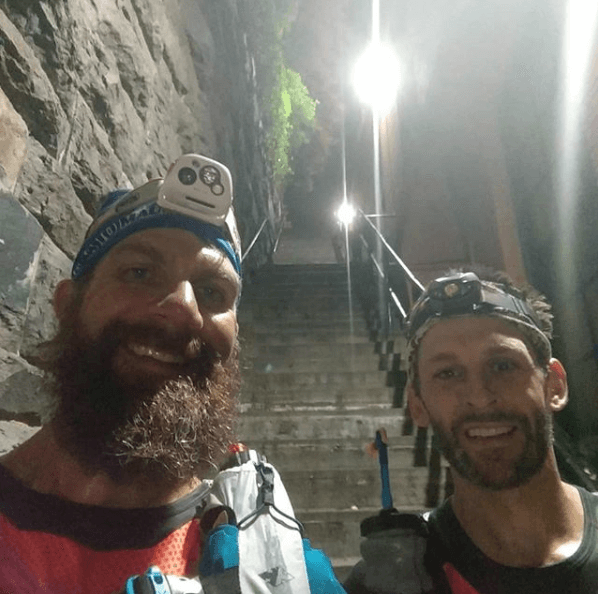
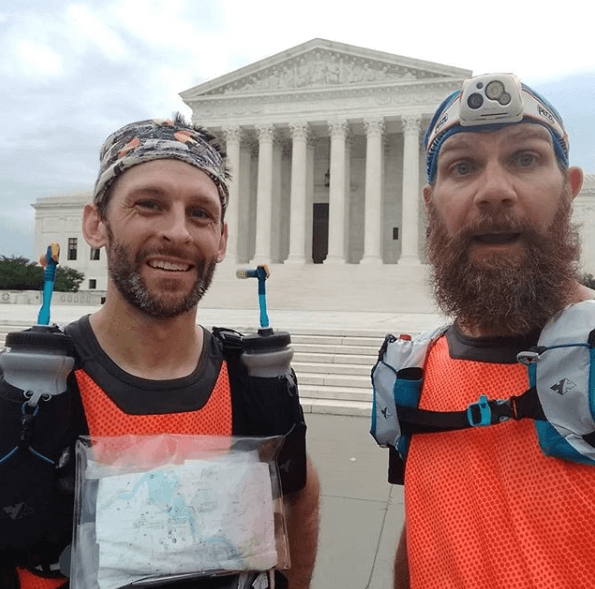
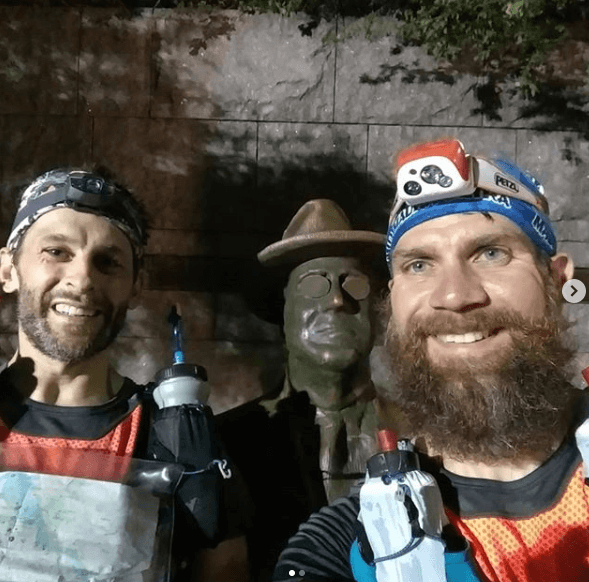
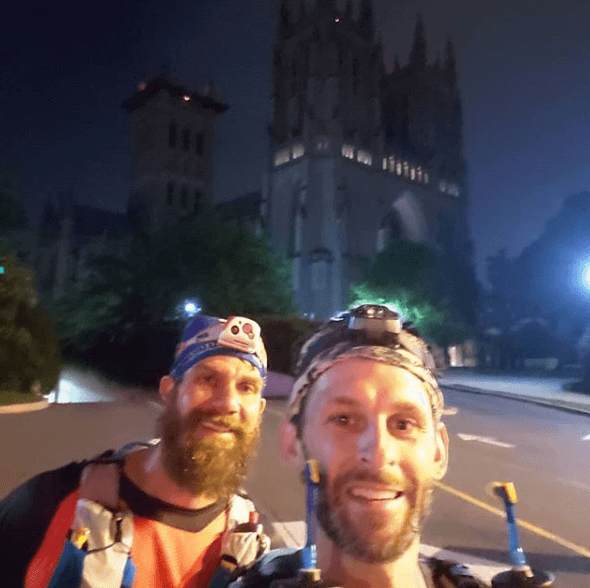

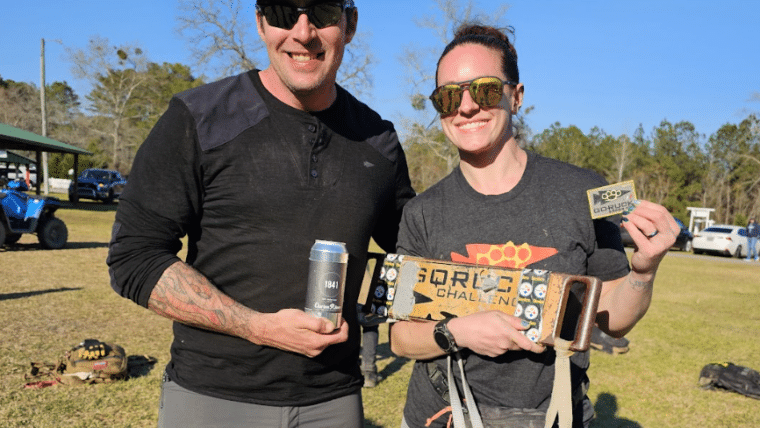
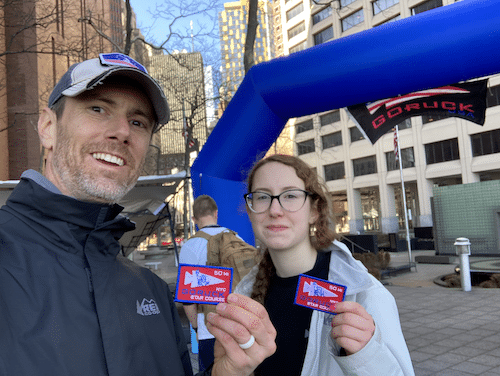
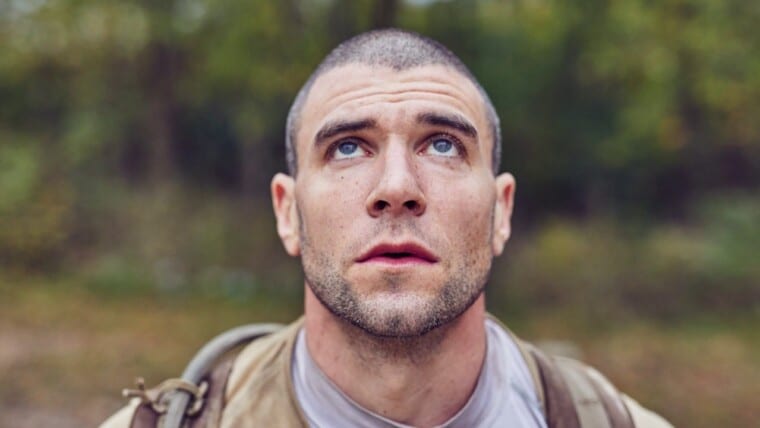
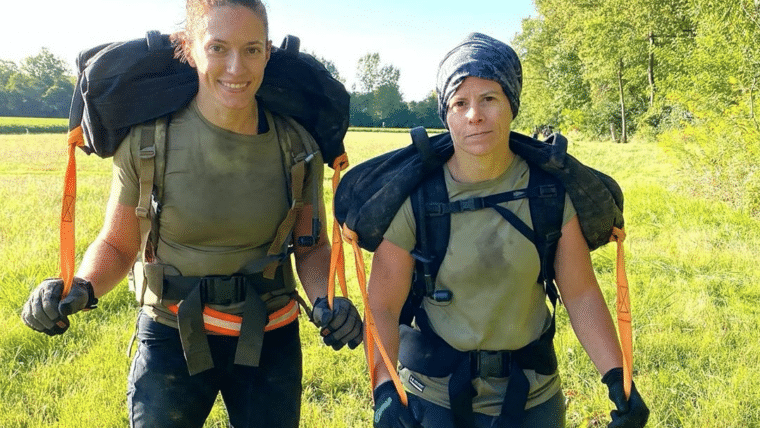
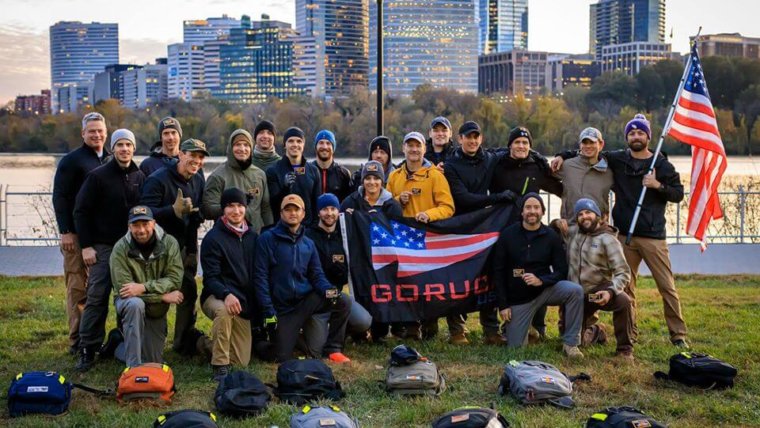
2 Replies to How to Complete the GORUCK Star Course 50-Mile in 10 hours
Thank you for sharing all of this in such a detailed way. When I saw that time on the Star Course IG feed, I was blown away. Congratulations, guys. What an amazing performance.
I agree that someone can break the 10 hour mark. I believe during the world championship race in Washington DC this year it may be possible with the level of competition, but may be difficult with the slightly heavier pack. I myself am aiming to come in under 12 hours which I believe will be one of the faster times. I did the Seattle 50 and had a team. We did it in around 50 miles but I had my little brother doing it with me and he had never even done a marathon before so he was lacking a lot of experience. My guess for the world championship is the fastest time will come in around 10 hours amd 30 minutes. Great read. I found honey stinger performance chews, salt stick, potassium pills, magnesium pills and IBU to help get me there. Plus electrolyte water in my water bladder. Staying on top of your nutrition is the main key during these events. If you have trained well and properly taper, do proper nutrition and push pass that pain cave you can get through this event no problem.
Which GORUCK Bag Should I Buy?
GORUCK Coupon Codes and Discounts
GORUCK Ballistic Trainers – Long Term Review
Review of the GORUCK Footwear Lineup
Which GORUCK Bag Should I Buy?
GORUCK Rucker 4.0 Review
GORUCK Simple Sandbag & Sandbag 2.0 Review
GORUCK Weight Vest Review (with Video)